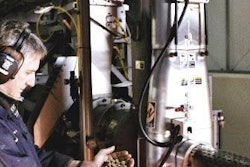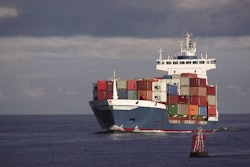Demand for your newly-introduced petfood has skyrocketed. Capacity has suddenly become an issue of paramount concern. Both of your 10-hour shifts have been loaded for weeks and simply cannot produce more without sacrificing quality. There is space to add additional machinery, but the company's ubiquitous quest for cost reduction has put a cap on your capital budget, so adding new equipment is not an immediate option.
If this sounds familiar, upgrading your line with pre-owned equipment is an option you may want to consider. Top-of-the-line used equipment is typically priced at 50% of the cost of new processing and packaging machines. For instance, a Wenger single screw extruder with a capacity of 1,000 pounds an hour costs about US$100,000 new, but is available for less than US$50,000. A Proctor & Schwartz dryer, a half million dollar machine when new, can be acquired for less than half that cost. Renting provides an even more economical option over the short term.
This article will address the timeline and financial aspects of your capacity challenges. But, how can you be sure these machines will work: that throughput will be significantly increased without compromising quality?
Perception vs. reality
Many food companies have large processing and packaging machinery inventories that are not being used. A lot of this equipment is also common to petfood company operations. Much of it has either been in operation for a minimal amount of time (three to four years) or is an older machine that has been well-maintained. In either case, these types of machines can provide a good value to a petfood processing or packaging operation. They can perform at optimal levels, and they can be acquired for a fraction of the cost of new machines.
So why is it that some plant managers are leery of acquiring pre-owned equipment? The biggest reason stems from a perceived lack of reliability. To be sure, no machine, new or pre-owned, will provide value if it does not function properly. However, high-quality pre-owned processing and packaging machines from reputable manufacturers do offer years of dependable service to their eventual end users. Though they are used, they are not "used up." The trick to mitigating risk in acquiring pre-owned equipment is to establish a set of performance standards that validate the machine's quality.
Performance standards
Plant managers should take into account several criteria when assessing the reliability of pre-owned petfood processing or packaging equipment, including:
What type of documentation exists to explain a machine's full capabilities.
How well the machine was maintained while it was in use.
How long the machine was used and for what purposes.
Where the machine was stored when not in use.
What the brand is.
Documentation of a machine's comprehensive performance capabilities is one of the most critical things needed to ensure optimal pre-owned equipment performance. The equipment provider should be able to offer counsel in choosing the right machine, and training, if need be, on how to use it. That requires a set of the machine's original specifications and a complete description of its features. A copy of the original operating manual should be supplied with each machine.
An important consideration in evaluating machine quality is the pedigree of the machine. Who owned it? What was produced on it? Maintenance is another important indicator. The very best pre-owned equipment received routine maintenance. In addition, a qualified, independent technician should inspect, test and certify that the equipment operates up to specific performance parameters.
Another consideration resides in how a piece of equipment was stored when not in use and how it was transported from one location to another. For example, a machine that was removed from the line and left behind at a plant, exposed to the elements for weeks or months, is more than likely a problem waiting to happen. Buyers should insist on equipment that has been stored indoors in climate-controlled environments. Storing equipment on a skid is an additional precaution that adds to long-term reliability.
Finally, don't forget to check out who the original manufacturer is. Many manufacturers have earned reputations for making high-quality processing and packaging machines. It only stands to reason that these machines will also provide more reliable service as a pre-owned asset.
When to consider
There are two types of situations where purchasing or renting pre-owned equipment makes sense. These include:
When a machine is needed in a very short period of time; and
When there is no room in capital budgets for new equipment.
To be sure, business needs can change rapidly in the petfood business. Increases in demand for a new or existing product can push production infrastructures past capacity, leading to lost sales opportunities. Another common problem involves the sudden collapse of an existing machine that can no longer be repaired economically. In addition, more advanced machines can bring significant cost savings through greater efficiencies.
Often, there is a dire need to obtain equipment quickly. And while a new machine can take nine months to a year for delivery and installation in extreme cases, pre-owned equipment can typically be delivered within weeks. Pre-owned equipment can also be rented to meet short-term needs.
Long-term benefits
Re-deployment of machinery assets brings capital spending into line and presents the number one long-term benefit to petfood producers. Oftentimes a machine that has outlasted its book value still has a useful service life of many more years. These machines can be redeployed to other locations throughout the organization if there is a program in place that organizes the process. They can also be sold or rented to other non-competing companies, which turn these idle machines into a source of revenue rather than an aging asset with no book value.
Renting a machine to address short-term opportunities is a fiscally responsible approach because the equipment being used can be returned if demand for a new product fails to meet expectations. Renting is also a smart approach when the market requires fast response but new equipment won't be available in time to help.
Expert counsel
Pre-owned equipment provides petfood processors an opportunity to cut costs, increase production and respond to market forces quickly. Individuals will run into few problems with qualified pre-owned equipment when they know what type of questions to ask and insist on machines that are maintained, stored and shipped properly.
The one common denominator to successfully acquiring pre-owned equipment is a reputable partner who specializes in processing and packaging equipment. These professionals should be able to explain how machines work, demonstrate service life, track records, install and test machines on site and provide copies of operating manuals that were originally supplied with the equipment. They should also offer expert counsel on the type of machine being acquired to make sure it is a perfect fit for ongoing processing and packaging needs.















